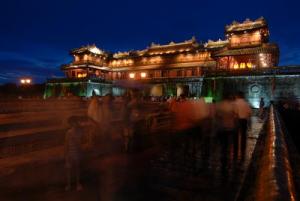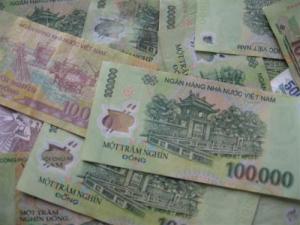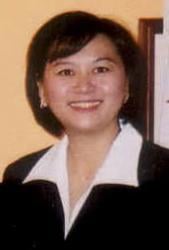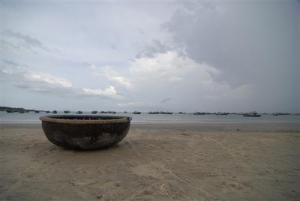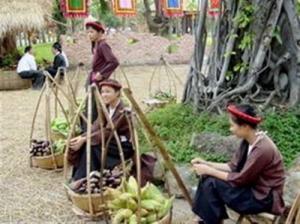Traditional Tuong Spices It Up with Modern Elements This Tet
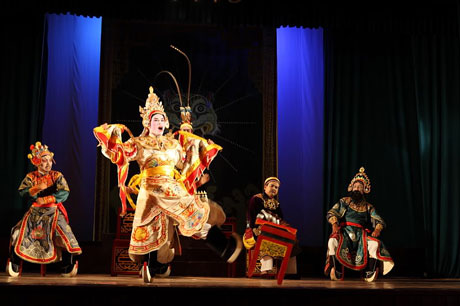
This coming Tet, 30 Tuong or classical drama actors from Dao Tan Theatre in the Central Binh Dinh Province will tour Ho Chi Minh City to showcase and promote their traditional art form.
Snippets from popular plays like Ong Gia Cong Vo Di Xem Hoi (The Old Man Carries His Young Wife on His Back to Go to the Festival) and Ly Dao Thanh Xu An Thuong Duong (Ly Dao Thanh Passess Judgement on the Queen) will be presented during the festival. But instead of the usual traditional setting, this year’s show will be something unique, a fusion of the old and contemporary themes to keep up with the current advanced world. This includes utilizing high-technology sound and light systems on stage.
One type of this combination between the customary and modern style is a mixture between Cai Luong and Tuong. The former is a Southern art form of reformed theatre while Tuong is the classic form. Director of Dao Tan Theatre Nguyen Gia Thien explained that they thought of the revolutionary idea in order to encourage more people to appreciate the traditional art. Moreover, since there is a need to pass on the old custom to the younger generation, new and one-of-a-kind techniques have to be developed in order to create a fresh perspective of the traditional art form.
Tuong began in the 12th century, but it wasn’t until the 17th century when it completely developed into an authentic traditional art form. From a simple folk art, it evolved into a higher form or royal art. Among its major themes are loyalty to the monarch and patriotic duty, evident in the play’s various elements like language, music, color, structure, personalities of the characters, struggles and other features. The show is made up of different performances such as singing; dancing; and symbolic and stylized music. Costumes are elaborate but quite heavy which can weigh up to 10 kilograms.
Tuong is similar to other performing arts like Cheo (traditional opera) in the North and Cai Luong. But it differs in that it requires rigid training and whole-hearted dedication to the art. Tuong actors have to be both physically flexible and vocally gifted because performing the art requires full use of the entire body as well as successful expression of emotions all at the same time.
But although a large number of hopefuls apply to the Ha Noi University of Theatre and Cinematography every year, most of them do so only for experience, if not fun. None of the estimated 2,000 yearly applicants aim at being a Tuong actor as their professional goal. As such, the institution and cultural authority as a whole is facing the challenge of investing more time and effort into the art to attract more performers into Tuong, especially the young ones. There is also a need to re-create the traditional art to adapt to the modern times in order to make it more interesting to the current audience.
At present, there are only seven professional Tuong theatres in Vietnam, located in the cities of Ha Noi and Ho Chi Minh, and in the provinces of Thanh Hoa, Hue, Da Nang, Binh Dinh and Khanh Hoa. Dao Tan Theatre itself gave away a free performance at Sen Hong Theatre in District 1, 23/ 9 Park just recently which received a very warm reception. This coming Tet, it will present more shows, hopefully enticing more people to watch and love the traditional art.
Although Tuong is an old art form which has encountered certain trials along the way, it is considered a strong representation of the Vietnamese spirit and character which is a stable justification that it will stand through the test of time for many more years and generations to come.





